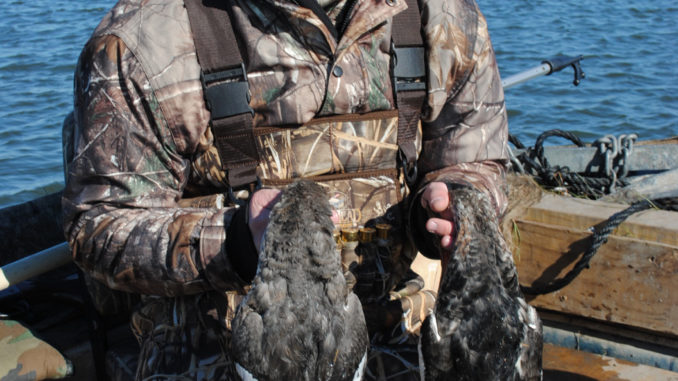
Big decoy spreads, big weather fronts can mean big days on the waters of Pamlico Sound.
A knot of ducks appeared low on the horizon, coming right out of the sun, headed for the spread of decoys, when Carlton Thornton, aka Captain Froggy, warned the hunters in his well-camouflaged boat to get ready.
“They might be coming in,” he said, lifting a duck call to his lips and chattering out a series of calls.
The birds banked and made a wide, sweeping curve that brought them along the outside edge of the decoys, bobbing in the Pamlico Sound a mile or two from the mouth of the Lake Mattamuskeet outfall canal.
Thornton gave the command for his hunters to shoot, and at the report of several shotgun blasts, one duck tumbled into the decoys, and the guide gave the command that sent his Chesapeake Bay retriever out to bring back the still-flopping duck.
Thornton, an Elizabeth City native who operates Capt. Froggy’s Guide Service out of Engelhard, just south of famous Lake Mattamuskeet in Hyde County, smiled and commented on the good fortune of having a bird down in the first minutes of what appeared to be developing into a bluebird day — a waterfowl hunter’s version of hell.
“Lots of days you won’t shoot until 8 o’clock, then you limit out,” he said. “It seems like it’s better when the sun gets up and shines on the decoys.”
Hunting the big waters of the bays and the western side of the sound, Thornton (252-661-7222) is never sure what that six-bird daily limit will consist of.
“The thing about hunting out here is you’re liable to kill all sorts of ducks: sea ducks, redheads, bluebills, teal,” he said. “Redheads and bluebills, we’ll kill them from the beginning of the season to the end, and sea ducks are the same way. Early in the season, we kill just about everything except canvasbacks. We kill a lot of teal, mostly greenwings, when it really gets cold. We’ll have widgeon and pintails here the whole season, but a lot of times, it’s better to be up in the creeks to kill them.”
Thornton can kill something almost from the time October arrives until the end of January. North Carolina’s sea duck season opens Oct. 1 and closes Jan. 31. The regular duck season is split into three segments: four days in early October, then Nov. 8-29 and Dec. 13-Jan. 24. The daily bag limit for ducks is six, and the daily bag limit for sea ducks is seven.
“The last three years, the November season has been very good, but you can’t get anybody to come in November; they think it’s too warm,” Thornton said. “There’s no rhyme or reason for it, but that’s the honest truth.”
Beyond getting an early start on ducks, Thornton said his hunters’ best results are almost always weather-related, even if it’s just the difference between a calm, bluebird day and a windy one.
“The wind gives you a lea side when you’re hunting in open water,” he said. “The wind keeps them off the big water and tends to get them flying lower than usual. They don’t want to fight the wind; they want to find a place to sit down, and that’s where the decoys do the work — you’re just out to get in their flight path.”
Thornton tries to do that by doing a lot of preseason scouting immediately before the beginning of each of the segments of the season.
“The key is scouting,” he said. “I’ll come out before the season and just ride around for two days, looking for ducks. You want to hunt in places where you’re seeing ducks, because they’re there for a reason.”
About as important as knowing areas ducks are using is having access to a good weather forecast,” Thornton said. “The hunting can be spectacular for two or three days after a big weather front, especially if the bad weather is up north; plenty of ducks will move into the area from the north.
“If you can come right after a front, you get new birds from up north that are unfamiliar with the territory, and you can kill a lot of ducks, quickly,” he said. “I have some go-to spots when the big fronts come through; I don’t even think, I just go to ‘em. Those blow-hard, nasty days are my favorites.
“When we’ve got 3- or 4-foot seas out there, those are the days you want to hunt — days you’re almost scared to go out. Those are the days when you kill ducks back in the swamps; you can kill ‘em any time of day, because they bang around so much.”
Once a big front has passed, hunting may hit a little lull until the next bad weather approaches. Thornton said success is just a matter of ducks getting used to their surroundings and to hunting pressure.
“I think they get spookier as the season goes along because they get familiar with the area and they can pick you out more easily,” he said.
Thornton likes to set up close to points in the bays and sound, well off the bank, so he can put out several dozen decoys on lines.
“I’ll sit out about six-dozen decoys on lines: teal, bluebills, sea ducks and redheads,” he said. “I’ll sit some out about six per line, some 10 or 12. I like to throw different stuff at ‘em as much as I can, give ‘em something they haven’t seen.”
Depending on where he’s seen most ducks rafted up or sitting on the water in knots of a half-dozen or so, he may position his boat well offshore, with his decoys strung out between the boat and the bank, or his decoys may be offshore from his boat. If birds seem hesitant to decoy on a certain morning or are flying past, well out of range, he can swap positions in just a few minutes to get in their way.
Thornton hunts from the same center console boat he uses to guide for trout, red drum and other saltwater species outside hunting season. He has it rigged with a wooden frame that he can slide over each gunwale, and he dresses the frame with pine boughs that essentially leave the boat looking like a small, floating island.
As far as weapons and loads, Thornton recommends a 12-gauge shotgun with a modified choke and No. 2 or BB shot in one of the various legal, non-toxic metals.
DESTINATION INFORMATION
WHERE TO GO/HOW TO GET THERE — Pamlico Sound fills with diving ducks and sea ducks, plus some puddle ducks, during the winter. Engelhard is a great jumping-off spot on the western side of the sound, a few miles from Lake Mattamuskeet. US 64 and US 264 are the main routes to Engelhard from points west. Popular boat ramps are the Engelhard ramp at US 264 and Kitty Island Rd., the Hydeland Canal ramp on Hydeland Rd. in Swan Quarter, the Rose Bay ramp off US 264 in Scranton and the Swan Quarter ramp at the intersection of Oyster Creek and Third streets in Swan Quarter.
WHEN TO GO — Sea ducks are in season from Oct. 1 through Jan. 31, but most hunters are interested in the second and third segments of the regular duck season, Nov. 8-29 and Dec. 13-Jan. 31.
EQUIPMENT — Hunting big waters requires a big string of decoys, at least six dozen of several different species: redheads, bluebills, sea ducks, canvasbacks, teal. Shotguns should be 12-gauge, chambered for 3- to 3 1/2-inch shells, shot through a modified choke. Nos. 2 and BB are preferred shot sizes in non-toxic metals like steel, tungsten or bismuth.
GUIDES — Capt. Froggy’s Guide Service, 252-661-7222, www.duckhuntingnc.com. See also Guides and Charters in Classifieds.
ACCOMMODATIONS — Hotel Engelhard, Englehard, 252-925-2001; Jeannette’s Motel, Engelhard, 252-925-1461; Carawan’s Motel, Swan Quarter, 252-926-5861.
MAPS — GMCO’s Chartbook of North Carolina, 888-420-6277 www.gmcomaps.com; Delorme’s NC Atlas & Gazetteer, www.delorme.com

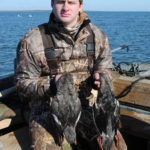
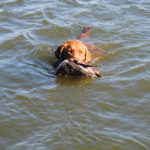
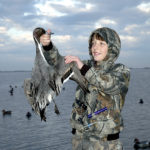
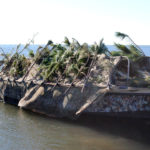
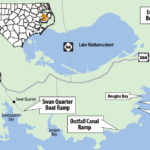



Be the first to comment